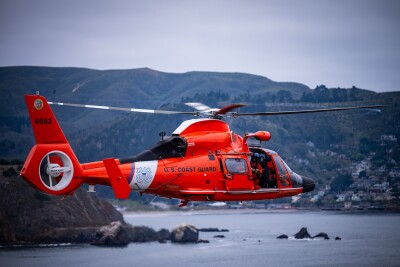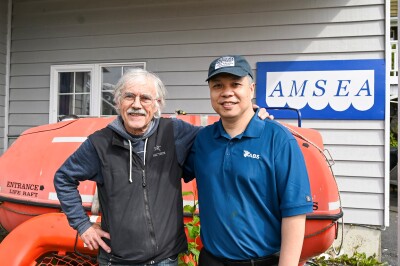Welding gone wrong
From U.S. Coast Guard reports
One December day, a 170-foot steel longliner/processor was secured to the dock in a harbor along Alaska's Aleutian Islands, outboard of another company boat. The longliner was undergoing some repairs and maintenance with just a caretaker crew of four.
That morning two welders came aboard to repair two fuel tanks in the boat's shaft alley. The tanks had developed cracks and were leaking diesel.
The welders stripped the tanks of residual fuel, then cleaned and purged them with CO2 to render them inert. Crewmen had removed foam insulation from the work areas. The workers hosed down the welding area and set up their equipment, including a fan for ventilation.
By mid-afternoon the welders started affixing a doubler plate onto the first fuel tank, taking turns welding and being the fire watch. Soon they began work on the second tank. At approximately 6:30 p.m., the worker doing the welding said he "felt some extra heat that could only be flame." He stopped welding, removed his helmet and saw flames starting to crawl up the bulkhead.
He immediately emptied a nearby CO2 extinguisher into the base of the fire to no avail. As the fire spread, the welders headed topside to get help.
Meanwhile, the chief mate in the wheelhouse of the boat tied up alongside saw heavy smoke coming from the neighboring boat. He rang an alarm, alerted the crew on both vessels, blew the danger signal on his vessel's horn, called 911 and radioed the dock manager.
The caretaker crew was quickly accounted for. Members of the chief mate's crew, having donned firefighting outfits and breathing apparatus, were rigging hoses to attack the fire.
The fire-suited crew headed toward the hatch that led to the shaft alley. One crew member, armed with a charged fire hose, went a few steps down the ladder, but thick smoke obscured his vision.
He secured the hose so it discharged down into the compartment. Both vessels' crews were evacuated to the dock.
Two fire trucks arrived around 7 p.m. The fire chief had electrical power/ventilation shut off around the shaft alley, and took over the actual firefighting. By 10:30 the fire was out. Crew members set up an hourly watch to ensure the flames didn't reignite.
Lessons learned
Investigators believe heat generated by work on the second tank caused the fire.
Never perform welding, burning or cutting operations on or near tanks, enclosed spaces or containers that have held fuel or acids. Ventilate the spaces and render the tanks inert before beginning.
Post a fire watch and keep fully charged fire extinguishers handy with extra extinguishers nearby. Watch both sides of bulkheads or overhead surfaces being worked on and have a properly fitted and charged fire hose ready to cool down adjacent surfaces.
Don't leave hot equipment unattended. Maintain the fire watch until the surfaces and surrounding areas are below ignition temperatures. Training, drills and exercises will increase your knowledge and ensure you can extinguish a fire onboard, and enable you to fish safe.






